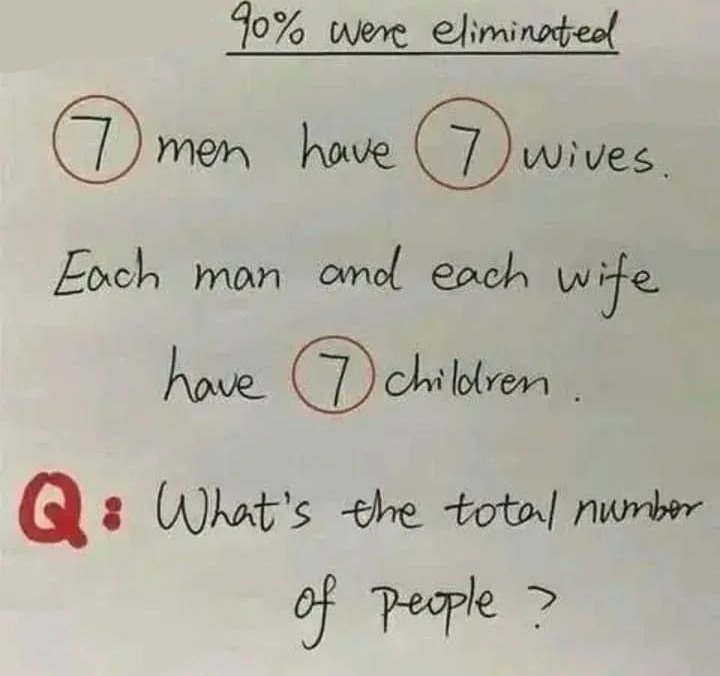The image presents an intriguing puzzle, often referred to as a “brainteaser” designed to test logic, comprehension, and arithmetic skills. It claims that “90% were eliminated” and then asks a question that has tripped up many:
The Puzzle Statement:
- 7 men have 7 wives.
- Each man and each wife have 7 children.
- Question: What is the total number of people?
At first glance, the problem seems straightforward. However, the nature of such puzzles is often to mislead or cause overthinking. Let’s break down the puzzle step by step.
Step 1: Analyzing the Data
- 7 Men: The puzzle starts by stating that there are 7 men.
- 7 Wives per Man: Each man has 7 wives. Therefore, the total number of wives is 7×7=497 \times 7 = 49 wives.
- Children Count:
- Each man and each wife has 7 children.
- Since there are 7 men, each with 7 wives, and each pair has 7 children, we must calculate the total number of children.
Step 2: Calculating the Children
For each of the 7 men:
- Each man has 7 wives.
- Each of the 7 wives has 7 children, which means each man has 7×7=497 \times 7 = 49 children with each wife.
Given that there are 7 men, the total number of children is 7×49=3437 \times 49 = 343.
Step 3: Summing Up the Total Number of People
Now, let’s sum up all the people involved:
- 7 Men
- 49 Wives
- 343 Children
Adding these together gives: 7+49+343=3997 + 49 + 343 = 399
Conclusion
The total number of people, according to the problem’s structure, is 399. This puzzle is an example of how mathematical challenges often require careful attention to detail and systematic breakdowns. Though it might appear simple at first, the puzzle tricks many by involving multiplication and addition across multiple layers. Such puzzles serve as great exercises for both sharpening the mind and appreciating the intricacies of logic and arithmetic.

Leave a Reply